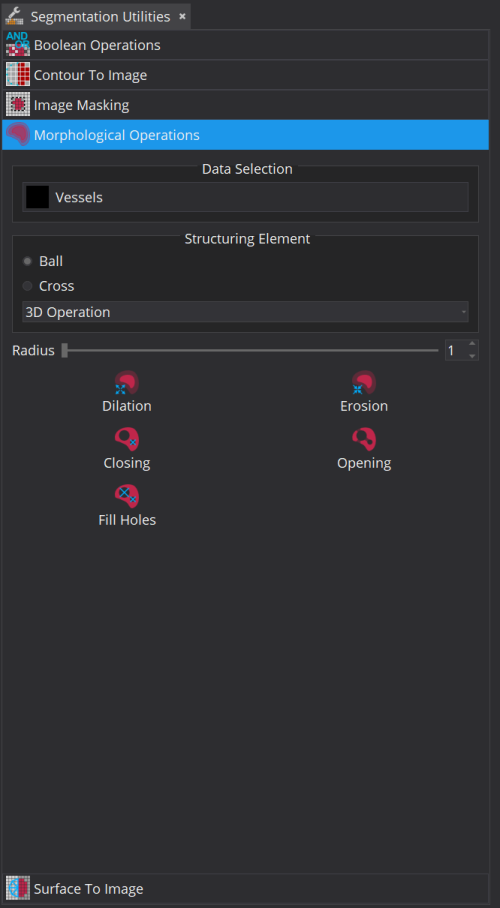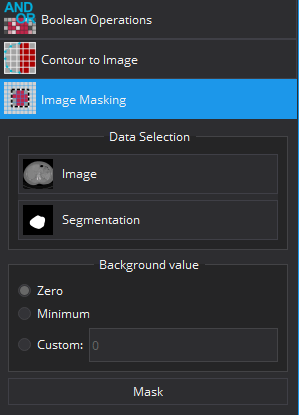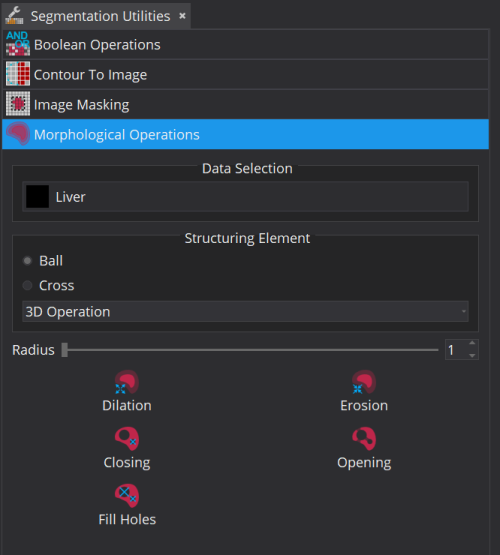|
Medical Imaging Interaction Toolkit
2024.12.99-d991a09f
Medical Imaging Interaction Toolkit
|

The Segmentation Utilities View allows to postprocess existing segmentations. Currently five different operations exist:
All postprocessing operations provide one or more selection widgets, which allow to select the data for the operation.
Boolean operations allows to perform the following fundamental operations on two or more segmentations:
The selected segmentations must have the same geometry (size, spacing, ...) in order for the operations to work correctly. The result will be stored in a new data node as a child node of the first selected segmentation.

Image masking allows to mask an image with either an existing segmentation or a surface. The operation requires an image and a segmentation or a surface. The result will be an image containing only the pixels that are covered by the respective mask.
The default background pixel value is zero. It can be changed to the minimum existing pixel value of the image or to a custom pixel value. If the custom pixel value is out of the valid bounds of the pixel type, it is optionally clamped accordingly.

Morphological operations are applied to a single segmentation image. Based on a given structuring element the underlying segmentation will be modified. The plugin provides a ball and a cross as structuring elements. The following operations are available:

Convert to segmentation allows to convert one or multiple input data into a multi-label segmentation. The supported input data types are surfaces, contour models and images. Surfaces and contour models will be converted into a new label (with the same color as the respective input data). Input images will be analyzed for their pixel content. Each pixel value (different to 0; which marks unlabeled pixels) will be associated with the new label. The conversion can have the following outputs:
For the output the following grouping modes can be selected (if the output is not new separate segmentation):
Remark on label values: when converting inputs into a multi-label segmentation, the conversion process tries to keep the label value the same like the original value. In cases of surfaces or contour models it would be 1. In case of images it would be the respective pixel value. In cases of the label value collision (the label value is already used in the segmentation) a new value will be assigned to resolve the conflict. Therefore it is only guaranteed that values are kept, if you convert only one input into a new or empty segmentation.
Remark unsupported geometries: if you select images as input, these images have to have either the same geometry or must be a sub geometry. If a reference is defined or you want to add them to an existing segmentation, the input images also have to have the same geometry like the target or be a sub geometry of it.
Extract from segmentation allows to extract the content of a multi-label segmentation (either all labels or a selection of labels) in various ways and stores it as simple images in the data storage.
The following output options are available (at least one must be selected):